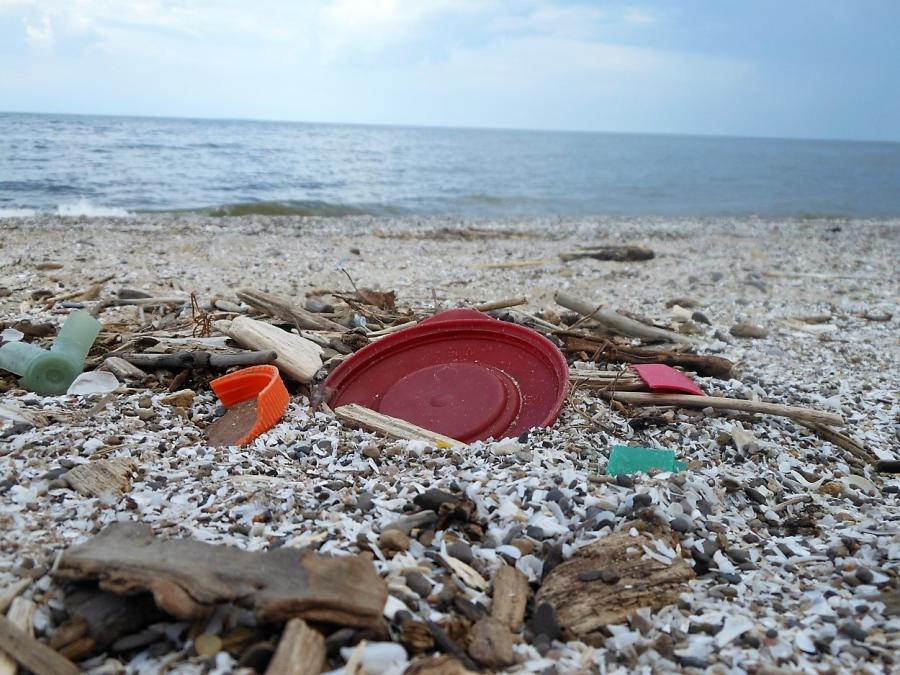Protecting Our Source Water: Actions to Reduce Plastic Waste

There's no denying the mounting scientific research that shows how our reliance on single-use plastic items is negatively impacting water resources worldwide, and the Great Lakes are no exception.
Plastics are ubiquitous in our environment and while plastic has many practical uses, plastic pollution has become a global challenge. Regardless of the type or size, plastic never decomposes, harming the environment, wildlife, and natural resources and creating health and safety hazards. Instead, plastics erode down into smaller and smaller pieces called microplastics, which have been found everywhere scientists have looked.
Studies have shown Lake Erie to have the highest concentration of microplastics among the five Great Lakes due to its location downstream of three other, larger lakes and the density of population along its shore. Plastics enter the lake from both land-based sources - including debris dumped, swept, or
blown from vessels or stationary platforms at sea, as well as abandoned or lost fishing gear - and land-based sources, such as intentional or unintentional littering and dumping in rivers and streams as well as stormwater discharges.
Macroplastics (plastics larger than 5mm) come from items such as cigarette butts, plastic lighters, food containers, grocery bags, beverage bottles, bottle caps, straws, plastic utensils, balloons, and tires. Microplastics, plastics less than 5mm, include microbeads, microfibers, and macroplastics that have broken down into smaller pieces.
More research is needed to better understand microplastics, including their effects of on human health, how to best identify and measure them, and how they're affected by drinking water treatment processes. Because of this lack of understanding, there are no state or federal regulations on microplastics.
The location of our four raw water intakes is the first line of defense in limiting the prevalence of microplastics in drinking water. All four intakes are located far offshore and pull water from deep in the water column and are therefore less impacted by plastic pollution, which tends to concentrate at the surface or sink to the bottom of the lake
In addition, our water treatment plants are very effective at removing extremely small contaminants, such as microscopic organisms, that are measured in microns. While there is no research on the efficacy of water treatment processes removing microplastics, since equivalent-size substances are removed, it would be anticipated that microplastics are removed as well.
Reducing pollutants in our source water reduces the water treatment costs associated with removing those pollutants. So keeping plastic waste out of Lake Erie makes it easier – and cheaper – for us to deliver consistently safe, quality water to your tap.
Some actions that you can take to start reducing your reliance on single-use plastic include:
- Skip the use of straws with your beverages or buy a reusable straw.
- Bring a reusable shopping bag with you. Leave them on the front seat of your car so you remember to bring them into the store.
- Carry reusable water bottles and mugs with you.
- Pack your lunch in reusable containers instead of plastic baggies.
- Avoid snacks/food with excess packaging. Buy in bulk and divide servings into reusable containers.
- Avoid using plastic cutlery. When ordering take-out, refuse plastic utensils. Keep a set of silverware at work and/or in your car for eating on the go.
- Make sure to recycle according to the rules of your community.
